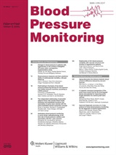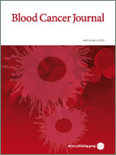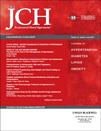
BLOOD PRESSURE MONITORING
Scope & Guideline
Uncovering the science behind effective measurement.
Introduction
Aims and Scopes
- Blood Pressure Measurement Techniques:
The journal focuses on the validation and accuracy of various blood pressure measurement devices and methodologies, including automated oscillometric devices, ambulatory blood pressure monitoring, and home monitoring systems. - Hypertension Management and Treatment Strategies:
Research published in this journal often explores different treatment protocols for hypertension, including pharmacological interventions, lifestyle modifications, and exercise regimens. - Epidemiological Studies:
The journal features studies that examine the prevalence and risk factors associated with hypertension across different demographics, including children, adults, and specific patient populations such as those with chronic diseases. - Technological Innovations in Hypertension Monitoring:
There is a consistent focus on the integration of new technologies, such as wearable devices and mobile applications, in the monitoring and management of blood pressure. - Cardiovascular Risk Assessment:
Many articles assess the relationship between blood pressure patterns (e.g., dipping vs. non-dipping) and cardiovascular outcomes, such as stroke and heart disease. - Genetic and Biomarker Studies:
The journal publishes research linking genetic factors and biomarkers, such as uric acid and C-reactive protein, to hypertension and its complications.
Trending and Emerging
- Integration of Artificial Intelligence and Machine Learning:
Recent studies are increasingly exploring the application of AI and machine learning algorithms in predicting blood pressure changes and enhancing monitoring accuracy, demonstrating the intersection of technology and healthcare. - Telemedicine and Remote Monitoring:
There is a growing trend towards research on telehealth solutions and remote blood pressure monitoring, particularly in the context of increasing demand for home healthcare solutions. - Impact of Comorbidities on Hypertension Management:
Emerging research is focusing on how comorbid conditions, such as diabetes and cardiovascular diseases, influence blood pressure management strategies and outcomes. - Longitudinal Studies on Blood Pressure Variability:
There is a notable uptick in studies examining blood pressure variability over time and its implications for cardiovascular health, highlighting the need for dynamic management strategies. - Role of Inflammation and Biomarkers:
Research exploring the links between inflammatory markers and hypertension is gaining prominence, indicating a broader understanding of the pathophysiology of hypertension. - Patient-Centric Approaches in Hypertension Management:
Increasing emphasis is being placed on understanding patient behaviors, preferences, and adherence to treatment regimens, which is critical for improving hypertension outcomes.
Declining or Waning
- Traditional Lifestyle Interventions:
While lifestyle interventions like dietary changes and physical activity continue to be relevant, there is a noticeable decline in studies focused solely on these aspects, possibly due to a growing emphasis on technological solutions. - Single-Factor Risk Assessments:
Research focusing on isolated factors affecting blood pressure, such as single dietary components or singular lifestyle habits, is becoming less common as more comprehensive, multifactorial approaches gain traction. - Basic Blood Pressure Monitoring in Stable Populations:
Studies that primarily focus on monitoring blood pressure in stable populations without additional risk factors or conditions are becoming less prevalent, with more research directed towards complex patient profiles or high-risk groups.
Similar Journals

ANNALS OF HEMATOLOGY
Elevating knowledge with impactful research and reviews.ANNALS OF HEMATOLOGY, published by Springer in Germany, stands as a premier platform for advancing knowledge in the field of hematology and medicine at large. With a significant impact factor and recognized rankings—Q2 in Hematology and Q1 in Medicine (miscellaneous) as of 2023—this journal is pivotal for researchers, clinicians, and students who are keen on exploring the latest developments in blood disorders, treatments, and innovative methodologies. Its broad scope encompasses original research, reviews, and discussions that aim to foster interdisciplinary dialogue, ensuring that the latest findings and theories are accessible to the scientific community. Although not an open-access journal, its rigorous peer-review process guarantees high-quality contributions, thereby solidifying its reputation as a vital resource in the hematological field. Founded in 1991, the ANNALS OF HEMATOLOGY continues to evolve, converging invaluable insights from both basic and clinical research until 2024. For those dedicated to improving patient outcomes and advancing hematological science, this journal remains an essential reference.

Neurosonology and Cerebral Hemodynamics
Unraveling the Dynamics of Brain Blood FlowNeurosonology and Cerebral Hemodynamics is a notable academic journal published by the Bulgarian Society of Neurosonology & Cerebral Hemodynamics, dedicated to advancing the field of neurosonology and exploring the dynamics of cerebral blood flow. With an ISSN of 1312-6431, this journal serves as a vital platform for researchers, clinicians, and students interested in the latest methodologies and clinical applications related to ultrasound techniques in neurovascular studies. While the journal does not currently have open access options, it remains a respected source for peer-reviewed articles that contribute to both theoretical insights and practical advancements in neurosonology. The journal aims to disseminate cutting-edge research and foster collaboration among professionals in neurology, radiology, and vascular biology, thereby enhancing the understanding of cerebral hemodynamics in health and disease. As the field continues to evolve, Neurosonology and Cerebral Hemodynamics plays a critical role in shaping future research and clinical practices.

Journal fur Hypertonie
Transforming hypertension understanding through rigorous research.Journal fur Hypertonie is a leading academic journal published by KRAUSE & PACHERNEGG GMBH, dedicated to the critical field of hypertension research. Since its inception in 1998, the journal has served as a vital platform for disseminating pioneering studies and advancements in the diagnosis, treatment, and management of hypertension. Although its Scopus coverage was discontinued in 2016, the journal continues to hold significance within the academic community, evidenced by its ranking of #98 out of 124 in Internal Medicine, placing it in the 21st percentile. This reflects its targeted impact and relevance in the evolving landscape of cardiovascular research. With no Open Access options, the journal remains a specialized resource indispensable for researchers, healthcare professionals, and students focused on enhancing their understanding and clinical practices related to hypertension. The journal's address is MOZARTGASSE 10, GABLITZ 3003, AUSTRIA.

JOURNAL OF MAGNETIC RESONANCE IMAGING
Exploring Innovative Approaches in Radiology and Imaging.JOURNAL OF MAGNETIC RESONANCE IMAGING (ISSN: 1053-1807; E-ISSN: 1522-2586), published by WILEY, stands as a leading academic platform in the field of Radiology, Nuclear Medicine, and Imaging. With an impressive impact factor that reflects its Q1 ranking in the respective category and a notable Scopus rank of 30 out of 333 journals, this journal serves as a critical resource for cutting-edge research and innovative practices in magnetic resonance imaging. Since its inception in 1991, it has provided a repository of high-quality research, reviews, and clinical applications aimed at enhancing the understanding and technological advancements within the imaging community. Although it does not offer Open Access, the journal's comprehensive approach ensures that professionals, researchers, and students alike can gain crucial insights and contribute significantly to the evolving landscape of medical imaging. With a commitment to excellence and relevance, the journal continues to push the boundaries of knowledge and practice in its field.

Blood Cancer Journal
Advancing knowledge in blood cancer research.Blood Cancer Journal, published by SPRINGERNATURE, is a leading open-access journal that has been at the forefront of hematology and oncology research since its inception in 2011. With an impressive impact factor and a commitment to disseminating high-quality research, it holds a prestigious Q1 ranking in both hematology and oncology categories as of 2023. The journal is dedicated to publishing innovative studies, comprehensive reviews, and insightful commentaries that advance our understanding of blood cancers, making it an essential resource for researchers, healthcare professionals, and students in the field. Its open-access model ensures that groundbreaking research is accessible to a global audience, promoting collaborative efforts to enhance treatment methodologies and patient outcomes. With a strong reputation illustrated by its Scopus rankings—8th in hematology and 30th in oncology—Blood Cancer Journal exemplifies excellence and leadership in the ever-evolving landscape of cancer research.

JOURNAL OF HUMAN HYPERTENSION
Advancing knowledge on hypertension for a healthier tomorrow.JOURNAL OF HUMAN HYPERTENSION, a prominent publication in the field of internal medicine, is dedicated to advancing the understanding of hypertension and its implications for human health. Published by SPRINGERNATURE in the United Kingdom, this esteemed journal has been a vital resource for researchers and clinicians since its inception in 1987, with a continuous commitment to disseminating high-quality, peer-reviewed research. With an impressive Q2 category rank in Internal Medicine and a Scopus rank of 53 out of 167, it occupies a crucial position within the academic community, reaching a 68th percentile ranking that underscores its significance. The journal aims to provide a platform for innovative studies and reviews, fostering knowledge that bridges basic science, clinical practice, and public health. Although it does not currently offer open access, it remains accessible through institutional subscriptions, ensuring that vital information about hypertension is available to a broad spectrum of healthcare professionals and researchers. Explore the critical findings and groundbreaking research published in the JOURNAL OF HUMAN HYPERTENSION to stay at the forefront of hypertension studies.

HYPERTENSION
Shaping the future of hypertension management.HYPERTENSION, published by Lippincott Williams & Wilkins, is a preeminent journal in the field of cardiovascular medicine, focusing on the latest research, therapies, and clinical practices related to hypertension and its associated disorders. With a distinguished Q1 ranking in Internal Medicine and a commendable Scopus rank of #12 out of 167 in its category, it occupies a vital position within the academic community, appealing to researchers, clinicians, and educators alike. The journal has been disseminating impactful findings since 1979 and continues to influence the discourse on hypertension through rigorous peer-reviewed articles, reviews, and studies designed to elevate understanding and treatment of this prevalent condition. HYPERTENSION remains an essential resource for professionals keen on advancing their knowledge in this critical area of medicine, fostering innovations that ultimately improve patient care.

BIORHEOLOGY
Exploring the Flow of Life's ComplexitiesBIORHEOLOGY is a peer-reviewed journal published by IOS PRESS, dedicated to the interdisciplinary field of biorheology, which studies the flow properties of biological fluids and the mechanical behavior of biological tissues. With its ISSN 0006-355X and e-ISSN 1878-5034, this journal has been a vital source of scientific knowledge since its inception in 1965, with coverage extending to recent years and into 2024. As a respected publication within the realms of physiology and biochemistry, it is classified in Q4 in both Physiology and Medical Physiology categories as of 2023, showcasing its niche position within the academic community. The journal primarily aims to disseminate research findings that advance our understanding of biorheological principles and their applications in medicine and biology. Although not listed as open access, BIORHEOLOGY provides essential insights to researchers, professionals, and students eager to explore the complexities of fluid mechanics in biological systems, making it a valuable resource for fostering innovation and collaboration across scientific disciplines.

Turkish Journal of Intensive Care-Turk Yogun Bakim Dergisi
Fostering Global Collaboration in Critical Care PracticesThe Turkish Journal of Intensive Care (Turk Yogun Bakim Dergisi), published by GALENOS PUBL HOUSE, is a premier, peer-reviewed open access journal dedicated to advancing the field of intensive care medicine. With its ISSN 2602-2974 and E-ISSN 2602-2974, this journal has been committed to providing high-quality research and clinical insights since its inception in 2002. The journal serves as a vital platform for professionals and researchers to disseminate innovative findings, explore emerging therapies, and discuss critical care practices, thereby contributing to enhanced patient outcomes in intensive care settings. Based in Istanbul, Turkey, it aims to foster an international dialogue among medical practitioners, researchers, and academicians dedicated to intensive care, ultimately contributing to the global body of knowledge in this crucial area of health care.

Journal of Clinical Hypertension
Bridging Gaps in Hypertension Understanding and CareJournal of Clinical Hypertension, published by WILEY, is a leading open-access journal focused on advancing the understanding and treatment of hypertension and related cardiovascular conditions. With an ISSN of 1524-6175 and an E-ISSN of 1751-7176, the journal provides a vital platform for researchers, healthcare professionals, and students alike to disseminate high-quality, peer-reviewed research. Since transitioning to open access in 2021, it has increased its reach and accessibility, ensuring critical information is available to a broader audience. The journal holds an impressive position in the Scopus ranks, nestled within the Q2 quartile across key disciplines including Cardiology and Cardiovascular Medicine, Endocrinology, Diabetes and Metabolism, and Internal Medicine, indicating a strong impact on the scientific community. With articles converging from 2001 to 2024, it not only highlights contemporary developments but also contributes to the ongoing dialogue in the field. Researchers are encouraged to submit their findings on hypertension, treatment methodologies, and epidemiology to further enhance the collective knowledge in this crucial area of health.